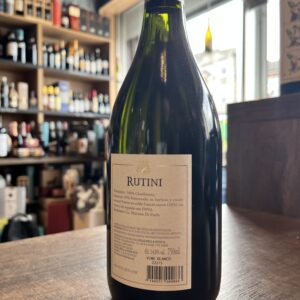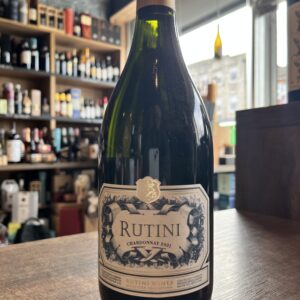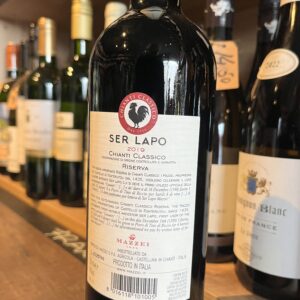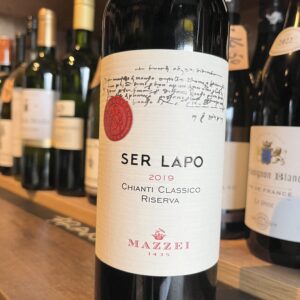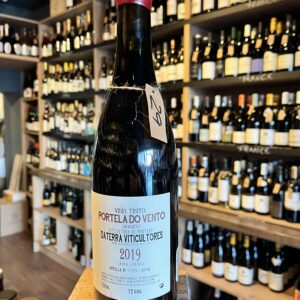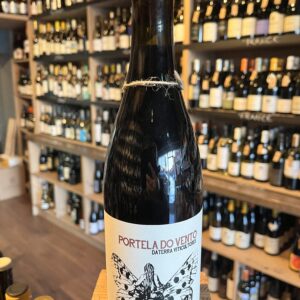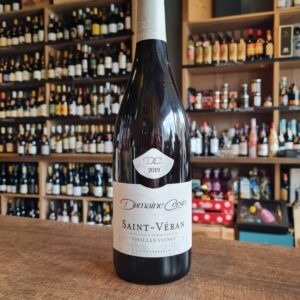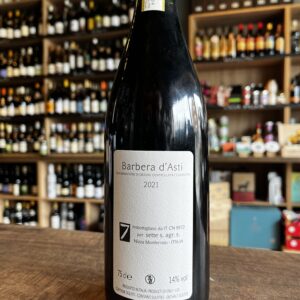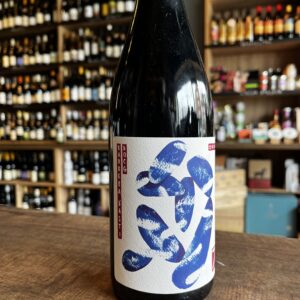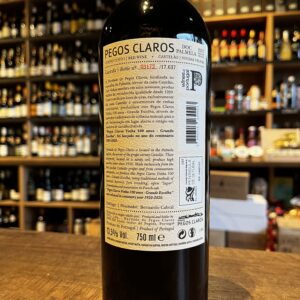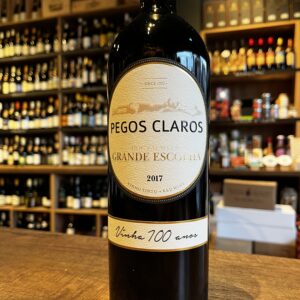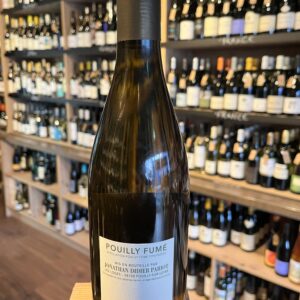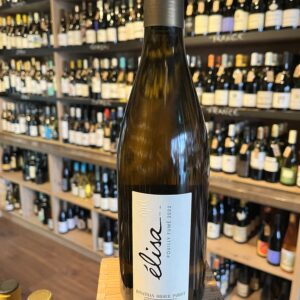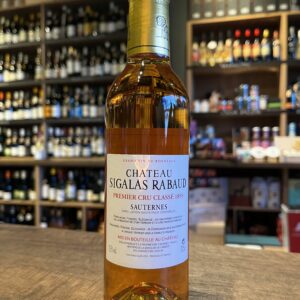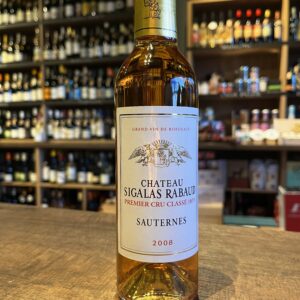-
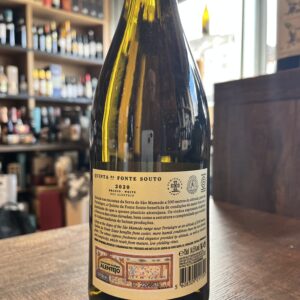
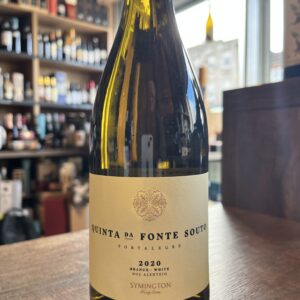 Quinta da Fonte Souto is the first property acquired by the Symington family beyond the Douro. Located in the sub-region of Portalegre in the Alto Alentejo, close to the Serra de São Mamede, the estate benefits from altitude and a cool microclimate, however, due to the schist and granite soils, yields are low, enabling the production of more concentrated and fresher wines. With about 207 hectares, of which 43 are vineyards, the property is not only focused on the planting of vines for wine production but also has a substantial area of chestnut trees, from which the name "souto" (chestnut grove) derives. The first wines from Quinta da Fonte Soute, were launched in 2019 and immediately made success. A Douro oenology adapted to the Alentejo privilege.
Quinta da Fonte Souto is the first property acquired by the Symington family beyond the Douro. Located in the sub-region of Portalegre in the Alto Alentejo, close to the Serra de São Mamede, the estate benefits from altitude and a cool microclimate, however, due to the schist and granite soils, yields are low, enabling the production of more concentrated and fresher wines. With about 207 hectares, of which 43 are vineyards, the property is not only focused on the planting of vines for wine production but also has a substantial area of chestnut trees, from which the name "souto" (chestnut grove) derives. The first wines from Quinta da Fonte Soute, were launched in 2019 and immediately made success. A Douro oenology adapted to the Alentejo privilege. -
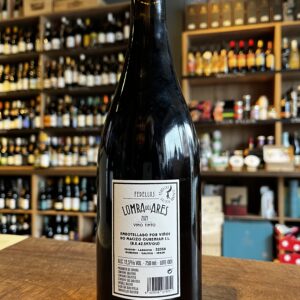
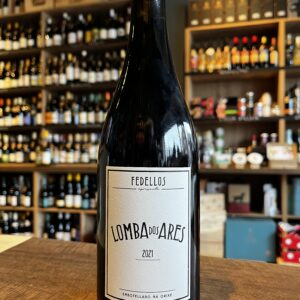 Lomba dos Ares is a Spanish take on Beaujolais, a blend of native grapes - Mencía, Mouratón, Garnacha Tintorera, Caiño and Bastardo - that captures the essence of Ribeira Sacra with a perfumed nose and plenty of freshness and finesse on the palate. It's not surprising that beautiful places like this produce soulful wines. Red fruits, orange peel, violets and cedar come in layers making this delicious to sip solo but also very versatile with charcuterie, roasted vegetable or pork dishes.
Lomba dos Ares is a Spanish take on Beaujolais, a blend of native grapes - Mencía, Mouratón, Garnacha Tintorera, Caiño and Bastardo - that captures the essence of Ribeira Sacra with a perfumed nose and plenty of freshness and finesse on the palate. It's not surprising that beautiful places like this produce soulful wines. Red fruits, orange peel, violets and cedar come in layers making this delicious to sip solo but also very versatile with charcuterie, roasted vegetable or pork dishes. -
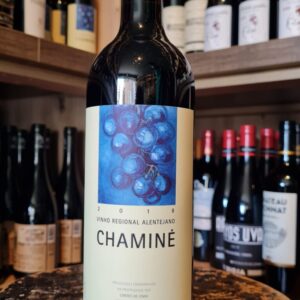 In 1988, A Danish-American couple, Hans and Carrie Jorgensen set out in a sailboat to find a place to start a family and plant vines. They came to Alentejo and they found “Cortes de Cima.” It was just a barren land and a few abandoned buildings. But Carrie, of Portuguese ancestry, said the landscape reminded her of California, her homeland. Hans, who was born in Denmark, fell in love with the Mediterranean sun. Their first wine was "born" in 1998 and the many successful vintages which followed as well as their pioneering spirit have put Cortes de Cima on the map. The main grape used is Aragonez (Spanish call it Tempranillo). It has a overt nose of fresh cherries, red plum, dark fruits and a lick of black liquorice. It is vibrant and well-rounded on the palate with good acidity and body. There is so much to love about this wine. One of my favourites enjoy!!
In 1988, A Danish-American couple, Hans and Carrie Jorgensen set out in a sailboat to find a place to start a family and plant vines. They came to Alentejo and they found “Cortes de Cima.” It was just a barren land and a few abandoned buildings. But Carrie, of Portuguese ancestry, said the landscape reminded her of California, her homeland. Hans, who was born in Denmark, fell in love with the Mediterranean sun. Their first wine was "born" in 1998 and the many successful vintages which followed as well as their pioneering spirit have put Cortes de Cima on the map. The main grape used is Aragonez (Spanish call it Tempranillo). It has a overt nose of fresh cherries, red plum, dark fruits and a lick of black liquorice. It is vibrant and well-rounded on the palate with good acidity and body. There is so much to love about this wine. One of my favourites enjoy!! -
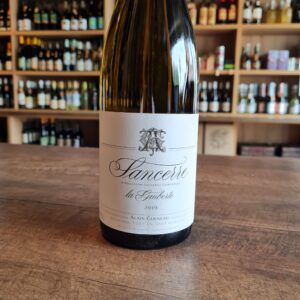 Stone fruit - check! Mineral - check! Floral - check! This wine is definitely ticking off all the right boxes! The minerality of saline and limestone sit on the tip of the tongue and linger through the entire taste. Light bodied, dry, moderate acidity, and a slightly exaggerated finish noted with blanched almonds and lemon rind bring the sip to an end. Time for another! An instant classic from a classic region! The Alain Gueneau Sancerre "La Guiberte" comes from a small family-owned estate at the Eastern end of France's Loire valley. You'll still find the grape's signature citrus freshness and a slight grassiness, but examples from Sancerre lean more towards restraint, minerality, and elegance. The secret is not only in Northern France's cooler climate, but also in the region's soil — a swathe of ancient clay-calcareous deposits that stretches from England's famous white cliffs of Dover across the channel and into Northern France. Alain and daughter Elisa are the 2nd and 3rd-generation of the Gueneau family to farm this land, three quarters of which is planted to Sauvignon Blanc vines with an average age of about 25 years. Enjoy this delicious, refreshing bottle (well chilled, of course!) now or over the next 3 years.
Stone fruit - check! Mineral - check! Floral - check! This wine is definitely ticking off all the right boxes! The minerality of saline and limestone sit on the tip of the tongue and linger through the entire taste. Light bodied, dry, moderate acidity, and a slightly exaggerated finish noted with blanched almonds and lemon rind bring the sip to an end. Time for another! An instant classic from a classic region! The Alain Gueneau Sancerre "La Guiberte" comes from a small family-owned estate at the Eastern end of France's Loire valley. You'll still find the grape's signature citrus freshness and a slight grassiness, but examples from Sancerre lean more towards restraint, minerality, and elegance. The secret is not only in Northern France's cooler climate, but also in the region's soil — a swathe of ancient clay-calcareous deposits that stretches from England's famous white cliffs of Dover across the channel and into Northern France. Alain and daughter Elisa are the 2nd and 3rd-generation of the Gueneau family to farm this land, three quarters of which is planted to Sauvignon Blanc vines with an average age of about 25 years. Enjoy this delicious, refreshing bottle (well chilled, of course!) now or over the next 3 years. -
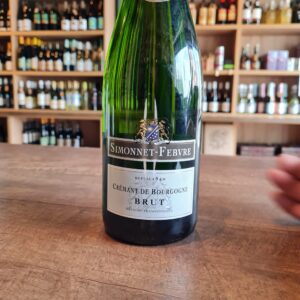 Simmonet-Febvre has been producing its wines with traditional methods since 1840. It is the only Maison in Chablis to produce Crémants of Burgundy. A harmoniously balanced wine with fine bubbles, a persistent foam and a wonderful length in the mouth. It is fresh and powerful on the nose with aromas of citrus. Drink this crémant as a chilled aperitif, as it comes or with a liqueur such as crème de cassis, and why not even drink it throughout a whole meal.
Simmonet-Febvre has been producing its wines with traditional methods since 1840. It is the only Maison in Chablis to produce Crémants of Burgundy. A harmoniously balanced wine with fine bubbles, a persistent foam and a wonderful length in the mouth. It is fresh and powerful on the nose with aromas of citrus. Drink this crémant as a chilled aperitif, as it comes or with a liqueur such as crème de cassis, and why not even drink it throughout a whole meal. -
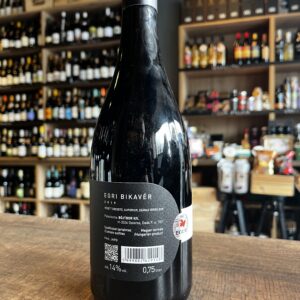
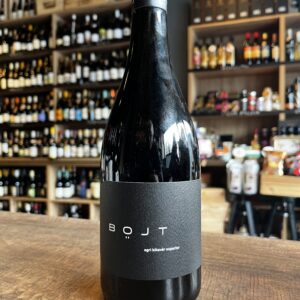 This wine is the truest representation of the legendary Egri Bikavér. Cool climate, volcanic soils give rise to the fresh, spicy, ripe yet vibrant fruits with a touch of leafiness from firm but well integrated, round tannins. Gergo Bojt is a revolutionary young producer in the northern Hungarian wine region, Eger. A town full of history and rich culture in winemaking. His four legged companion, Buddy, always follows him around the vineyard. They form a great team with a sense of playfulness showing through the wines, too. The 1552 Siege of Eger became an emblem of Hungarian heroism when the castle was successfully defended against the united forces of the two greatest Ottoman troops. When accounted for the defeat of their 20-fold army, the Ottoman leaders claimed the Hungarians - including women - fought with such an unparalleled courage they must have had drank the bull’s blood. This gave the name to the region’s emblematic red blend, Egri Bikavér (bull’s blood of Eger). Therefore every bottle is embossed with “1552 Eger".
This wine is the truest representation of the legendary Egri Bikavér. Cool climate, volcanic soils give rise to the fresh, spicy, ripe yet vibrant fruits with a touch of leafiness from firm but well integrated, round tannins. Gergo Bojt is a revolutionary young producer in the northern Hungarian wine region, Eger. A town full of history and rich culture in winemaking. His four legged companion, Buddy, always follows him around the vineyard. They form a great team with a sense of playfulness showing through the wines, too. The 1552 Siege of Eger became an emblem of Hungarian heroism when the castle was successfully defended against the united forces of the two greatest Ottoman troops. When accounted for the defeat of their 20-fold army, the Ottoman leaders claimed the Hungarians - including women - fought with such an unparalleled courage they must have had drank the bull’s blood. This gave the name to the region’s emblematic red blend, Egri Bikavér (bull’s blood of Eger). Therefore every bottle is embossed with “1552 Eger". -
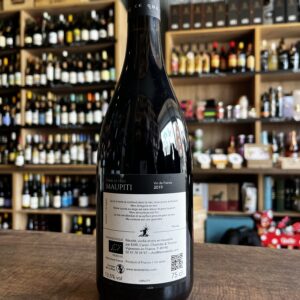
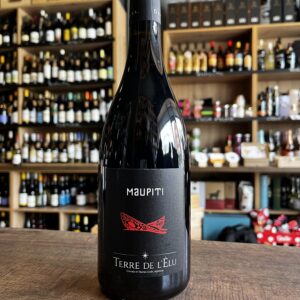 In January 2008, Charlotte and Thomas embarked on a marvelous winemaking adventure with the acquisition of the Clos de l’Élu domain, on the schist-rich lands of the Anjou Noir. With many years’ experience as a wine consultant (Thomas), in the fields of communication and management (Charlotte), they are both deeply passionate about the life of this domain which lies on the finest terroirs of the Layon valley. The 20 hectares are farmed organically and the domain offers a structured range of different wines. If it was the Chenin that attracted Thomas to Anjou, the red grape varieties (Cabernet Franc, Grolleau, Pineau d’Aunis, gamay) continue to inspire him with deep, rich vintages that are expressive and full of finesse. The team is driven by strong convictions, from the work in the vineyard to the cellar, in order to produce wines that truly reflect the terroir. In the vineyards: the whole domain was converted to organic farming in April 2010 (first certified organic vintage in 2013), severe disbudding, appropriate pruning modes depending on the grape variety and plot, soil work, manual harvest in 20 kg boxes, draconian sorting while harvesting. In the cellar: use of gravity as much as possible, natural fermentations, winemaking choice favoring the least manipulation of the grapes possible, winemaking of the reds in whole bunches, maceration and aging in tanks, weathered (or aged) barrels or clay amphorae.
In January 2008, Charlotte and Thomas embarked on a marvelous winemaking adventure with the acquisition of the Clos de l’Élu domain, on the schist-rich lands of the Anjou Noir. With many years’ experience as a wine consultant (Thomas), in the fields of communication and management (Charlotte), they are both deeply passionate about the life of this domain which lies on the finest terroirs of the Layon valley. The 20 hectares are farmed organically and the domain offers a structured range of different wines. If it was the Chenin that attracted Thomas to Anjou, the red grape varieties (Cabernet Franc, Grolleau, Pineau d’Aunis, gamay) continue to inspire him with deep, rich vintages that are expressive and full of finesse. The team is driven by strong convictions, from the work in the vineyard to the cellar, in order to produce wines that truly reflect the terroir. In the vineyards: the whole domain was converted to organic farming in April 2010 (first certified organic vintage in 2013), severe disbudding, appropriate pruning modes depending on the grape variety and plot, soil work, manual harvest in 20 kg boxes, draconian sorting while harvesting. In the cellar: use of gravity as much as possible, natural fermentations, winemaking choice favoring the least manipulation of the grapes possible, winemaking of the reds in whole bunches, maceration and aging in tanks, weathered (or aged) barrels or clay amphorae.Technical Sheet
-
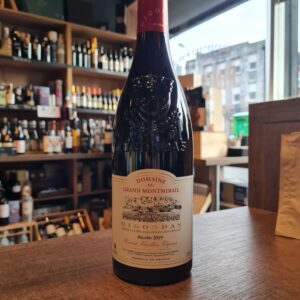 Domaine du Grand Montmirail Gigondas lies in the foothills of a limestone escarpment in a remote part of Gigondas. A blend of Grenache, Syrah and Mourvedre, this wine has real depth of flavour with concentrated black fruits balanced by fresh acidity and a rich warm finish. In Gigondas, cultivating grapes to make wine and olives to make oil stretches back to ancient times. As long ago as the 1st century, Julius Caesar established a colony of veterans on this site. One is said to have been so jovial that he was nicknamed Jucundus, 'the joyful', and his village became known as Jocundatis, which later became Gigondas. Domain du Grand Montmirail covers more than 35 Ha, planted exclusively on the hillsides and terraces located south / south-east side of the Dentelles de Montmirail, forming a superb amphitheater dedicated to the vine and the wine. The altitude of the vineyard varies between 300 and 350 meters and enjoys natural protection against the wind dominating the mistral. The vineyard is composed of Grenache, Syrah and Mourvèdre parcels, aged between 15 and 65 years. The harvest begins with Syrah, the quickest grape to ripen, and then the Grenache in the highest spots. The Mourvèdre is the slowest ripening and usually the last grape to be harvested. The entire harvest is picked by hand, and yields are never more than 35 hl/ha. Among the old vines on the terraces, they generally fall to a maximum of 30 hl/ha. The recently picked grapes are transported quickly to the winery situated off to the side of the vineyards. Pair it with Beef, Casserole, Lamb, Mushrooms
Domaine du Grand Montmirail Gigondas lies in the foothills of a limestone escarpment in a remote part of Gigondas. A blend of Grenache, Syrah and Mourvedre, this wine has real depth of flavour with concentrated black fruits balanced by fresh acidity and a rich warm finish. In Gigondas, cultivating grapes to make wine and olives to make oil stretches back to ancient times. As long ago as the 1st century, Julius Caesar established a colony of veterans on this site. One is said to have been so jovial that he was nicknamed Jucundus, 'the joyful', and his village became known as Jocundatis, which later became Gigondas. Domain du Grand Montmirail covers more than 35 Ha, planted exclusively on the hillsides and terraces located south / south-east side of the Dentelles de Montmirail, forming a superb amphitheater dedicated to the vine and the wine. The altitude of the vineyard varies between 300 and 350 meters and enjoys natural protection against the wind dominating the mistral. The vineyard is composed of Grenache, Syrah and Mourvèdre parcels, aged between 15 and 65 years. The harvest begins with Syrah, the quickest grape to ripen, and then the Grenache in the highest spots. The Mourvèdre is the slowest ripening and usually the last grape to be harvested. The entire harvest is picked by hand, and yields are never more than 35 hl/ha. Among the old vines on the terraces, they generally fall to a maximum of 30 hl/ha. The recently picked grapes are transported quickly to the winery situated off to the side of the vineyards. Pair it with Beef, Casserole, Lamb, Mushrooms -
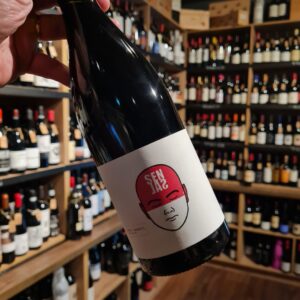 Javier Revert Viticultor is the personal project of Javi Revert, oenologist and part of the technical team of Celler del Roure since 2009. It all started in 2014, when Javier started to recover a vineyard planted by his great-grandfather in the highest area of Font de la Figuera, an area influenced by the Mediterranean character and the harsh winter of La Mancha. It was in the 2016 vintage when their first wines were launched. Javier Revert is one of the young winemakers who tries to interpret the landscape, looking for the best orientations, recovering abandoned vineyards and planting new ones with historical varieties from the area. Javier Revert Sensal is a red wine made with Red Grenache and Monastrell from a 0.8-hectare vineyard with the same name planted in 1965 at 700 metres of altitude on clayey, fresh and slightly clayey soils. Rice dishes, White meats, Charcuterie, Red meat
Javier Revert Viticultor is the personal project of Javi Revert, oenologist and part of the technical team of Celler del Roure since 2009. It all started in 2014, when Javier started to recover a vineyard planted by his great-grandfather in the highest area of Font de la Figuera, an area influenced by the Mediterranean character and the harsh winter of La Mancha. It was in the 2016 vintage when their first wines were launched. Javier Revert is one of the young winemakers who tries to interpret the landscape, looking for the best orientations, recovering abandoned vineyards and planting new ones with historical varieties from the area. Javier Revert Sensal is a red wine made with Red Grenache and Monastrell from a 0.8-hectare vineyard with the same name planted in 1965 at 700 metres of altitude on clayey, fresh and slightly clayey soils. Rice dishes, White meats, Charcuterie, Red meat -
Out of stock
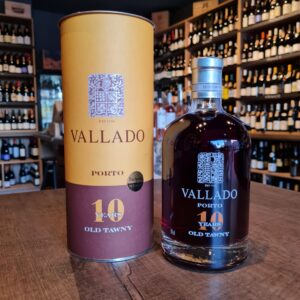 Quinta do Vallado, established in 1716, is one of the oldest and most famous Quintas in the Douro Valley. It once belonged to the legendary Dona Antonia Adelaide Ferreira, and still belongs to her descendents. Produces both still and port wines. This eighteenth-century Douro wine estate is actually one of the most modern-looking in Portugal. Although the team uses the traditional panoply of indigenous grapes, its methods are bang up to date and the results are nothing short of sensational. Tawny ports are wines usually made from red grapes that are aged in wooden barrels exposing them to gradual oxidation and evaporation. As a result of this oxidation, they mellow to a golden-brown color. The exposure to oxygen imparts "nutty" flavours to the wine, which is blended to match the house style. This port is really best enjoyed with a good strong cheese board. Think mature hard cheeses and salty blues. Rich and flavoursome to match with the intense flavours of the port.
Quinta do Vallado, established in 1716, is one of the oldest and most famous Quintas in the Douro Valley. It once belonged to the legendary Dona Antonia Adelaide Ferreira, and still belongs to her descendents. Produces both still and port wines. This eighteenth-century Douro wine estate is actually one of the most modern-looking in Portugal. Although the team uses the traditional panoply of indigenous grapes, its methods are bang up to date and the results are nothing short of sensational. Tawny ports are wines usually made from red grapes that are aged in wooden barrels exposing them to gradual oxidation and evaporation. As a result of this oxidation, they mellow to a golden-brown color. The exposure to oxygen imparts "nutty" flavours to the wine, which is blended to match the house style. This port is really best enjoyed with a good strong cheese board. Think mature hard cheeses and salty blues. Rich and flavoursome to match with the intense flavours of the port. -
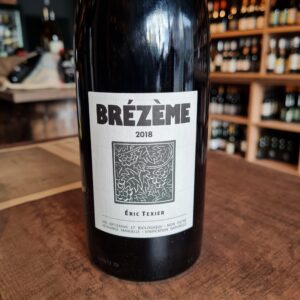 The 2019 Cotes du Rhone Brézème is a big, well structured wine that retains the freshness and lively character always present in this cuvee. The wine was vinified naturally, without added sulfur. The wine shows vivid aromas of blackberry and black cherry with hints of musk, blueberry, earth and citrus. The palate is deep and textured with earthy black fruits, bitter chocolate and mineral flavours, quite pure and long. Serve now, slightly chilled, with grilled meats, tagines and full-flavored cheeses, or cellar fo five to ten years or more.
The 2019 Cotes du Rhone Brézème is a big, well structured wine that retains the freshness and lively character always present in this cuvee. The wine was vinified naturally, without added sulfur. The wine shows vivid aromas of blackberry and black cherry with hints of musk, blueberry, earth and citrus. The palate is deep and textured with earthy black fruits, bitter chocolate and mineral flavours, quite pure and long. Serve now, slightly chilled, with grilled meats, tagines and full-flavored cheeses, or cellar fo five to ten years or more. -
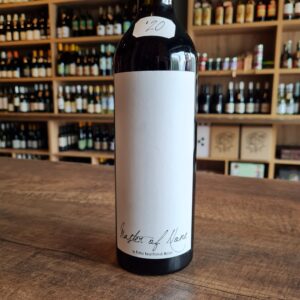 Master of none - Playing with words referring to themselves not being an expert in any one varietal or wine style hence the saying: “Jack of all trades, master of none”. Clever and humble, nonetheless, their wines are at the forefront not only of South Africa but in the world with the amazing wines they are producing. If you enjoy reds on the lighter end of the spectrum such as Pinot Noir or Gamay then Pieter's 'Master of None' will definitely be up your street! It comprises a blend of 5 different grape varieties from tiny vineyard plots across 6 distinct regions; 40% Grenache from Wellington, 30% Cinsault from sites in Darling and Stellenbosch, 8% Pinot Noir from Elgin and a further 8% Syrah from Swartland. Unusually, Pieter then tops up the blend with Voor Paardeberg Chenin Blanc, adding aromatic freshness to the finished wine. It drinks like a top-class Beaujolais – super bright and juicy, bursting with wild strawberry, cherry and with an earthy, smoky undercurrent. Enjoy at room temperature or slightly chilled – perfect for summer drinking! “In 2004, a lady came to my house to buy wine. She asked for anything but Shiraz. “I don’t drink Shiraz”, were her exact words. I poured her a glass of wine. She loved it and bought 3 cases. It was a straight Shiraz. It’s a fact – we do judge the book by its cover.”
Master of none - Playing with words referring to themselves not being an expert in any one varietal or wine style hence the saying: “Jack of all trades, master of none”. Clever and humble, nonetheless, their wines are at the forefront not only of South Africa but in the world with the amazing wines they are producing. If you enjoy reds on the lighter end of the spectrum such as Pinot Noir or Gamay then Pieter's 'Master of None' will definitely be up your street! It comprises a blend of 5 different grape varieties from tiny vineyard plots across 6 distinct regions; 40% Grenache from Wellington, 30% Cinsault from sites in Darling and Stellenbosch, 8% Pinot Noir from Elgin and a further 8% Syrah from Swartland. Unusually, Pieter then tops up the blend with Voor Paardeberg Chenin Blanc, adding aromatic freshness to the finished wine. It drinks like a top-class Beaujolais – super bright and juicy, bursting with wild strawberry, cherry and with an earthy, smoky undercurrent. Enjoy at room temperature or slightly chilled – perfect for summer drinking! “In 2004, a lady came to my house to buy wine. She asked for anything but Shiraz. “I don’t drink Shiraz”, were her exact words. I poured her a glass of wine. She loved it and bought 3 cases. It was a straight Shiraz. It’s a fact – we do judge the book by its cover.” -
Out of stock
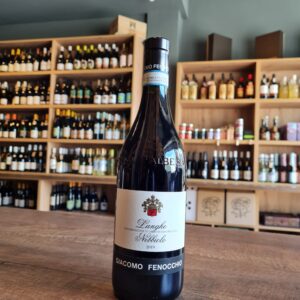 Since 1864, five generations of the Fenocchio family have been producing wine in the heart of Barolo - most of them born in the same yellow house in Monforte d’Alba, at the top of a hillside covered in Nebbiolo grapes. Claudio Fenocchio took upon his father teachings and instead of modernazing the Barolo winemaking techniques, he and with the support of his brothers decided to keep the tradition and build on it. Fenocchio has not taken up organic or biodynamic farming methods but, on the other hand, the estate never took to chemical fertilisers or herbicides, so diverse ground cover and natural predators protect the vines, which grow at their own pace. And in the winery, fermentation is similarly driven by nature and the local microflora. Technically, Claudio has found a way of producing wines which have approachable fruit when young, yet built around a strong tannic structure which does not overwhelm early on, but encourages the development of the wine over years. It is partly due to some green harvesting and careful selection, partly due to enzymatic reaction (ironically) during the long fermentation, which melds the fruit and tannin seamlessly. Barolos are aged for five months in stainless Slovenian oak and a further year in the bottle before release. steel, two years in Slovenian oak and a further year in the bottle before release. More than defining itself as traditional or modern Barolo, Giacomo Fenocchio wine is an expression of terroir.
Since 1864, five generations of the Fenocchio family have been producing wine in the heart of Barolo - most of them born in the same yellow house in Monforte d’Alba, at the top of a hillside covered in Nebbiolo grapes. Claudio Fenocchio took upon his father teachings and instead of modernazing the Barolo winemaking techniques, he and with the support of his brothers decided to keep the tradition and build on it. Fenocchio has not taken up organic or biodynamic farming methods but, on the other hand, the estate never took to chemical fertilisers or herbicides, so diverse ground cover and natural predators protect the vines, which grow at their own pace. And in the winery, fermentation is similarly driven by nature and the local microflora. Technically, Claudio has found a way of producing wines which have approachable fruit when young, yet built around a strong tannic structure which does not overwhelm early on, but encourages the development of the wine over years. It is partly due to some green harvesting and careful selection, partly due to enzymatic reaction (ironically) during the long fermentation, which melds the fruit and tannin seamlessly. Barolos are aged for five months in stainless Slovenian oak and a further year in the bottle before release. steel, two years in Slovenian oak and a further year in the bottle before release. More than defining itself as traditional or modern Barolo, Giacomo Fenocchio wine is an expression of terroir. -
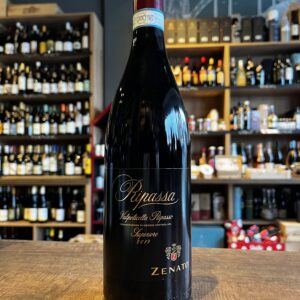 The Ripassa Valpolicella Superiore from Zenato is an excellent, characterful and harmonious red wine cuvée from the Italian DOC Valpolicella Ripasso wine-growing region.This wine appears dark and deep ruby red in the glass and unfolds its elegant and intense bouquet, which consists of aromas of black cherries and plums. Spicy nuances and hints of rum pot, the result of the Apassimento process, complement the nose.On the palate, this red wine from Veneto is juicy and supple and its compact fruit is complemented by subtle notes of coffee, licorice and almond and carried into a long, elegant finish.
The Ripassa Valpolicella Superiore from Zenato is an excellent, characterful and harmonious red wine cuvée from the Italian DOC Valpolicella Ripasso wine-growing region.This wine appears dark and deep ruby red in the glass and unfolds its elegant and intense bouquet, which consists of aromas of black cherries and plums. Spicy nuances and hints of rum pot, the result of the Apassimento process, complement the nose.On the palate, this red wine from Veneto is juicy and supple and its compact fruit is complemented by subtle notes of coffee, licorice and almond and carried into a long, elegant finish. -
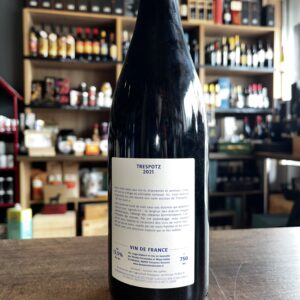
 A lively and ripe juice which, in the words of Maya and Nicolas, faithfully captures the character of the wines of the commune where they are based. A very nice balance and a great drinkability for this Cahors which breaks the codes. Light and greedy at the same time, it offers us a superb length and much pleasure.
A lively and ripe juice which, in the words of Maya and Nicolas, faithfully captures the character of the wines of the commune where they are based. A very nice balance and a great drinkability for this Cahors which breaks the codes. Light and greedy at the same time, it offers us a superb length and much pleasure.


